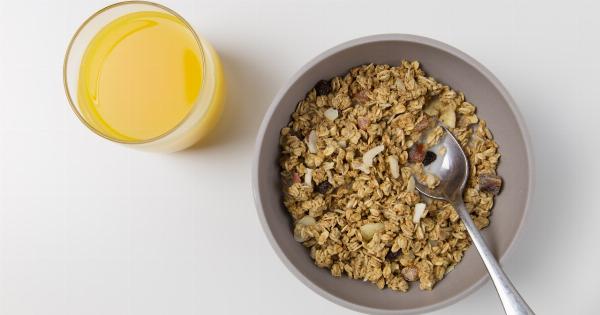Introducing solid foods to your baby is an exciting milestone in their development. Watching them explore new tastes and textures can be both enjoyable and nerve-wracking for parents.
However, determining when it is safe and appropriate to start introducing solids can be a confusing decision for many parents.
In this article, we will discuss the recommended age and signs of readiness for introducing solid foods, considerations to keep in mind, and some tips for a smooth transition.
It is important to note that every baby is different, and you should always consult with your pediatrician before making any changes to your baby’s diet.
Recommended Age for Introducing Solid Foods
The American Academy of Pediatrics (AAP) recommends exclusively breastfeeding or formula-feeding your baby for about the first six months of their life.
Breast milk or formula provides all the necessary nutrients for optimal growth and development during this period.
Around six months of age, most babies will start showing signs of readiness to begin solid foods. However, it is essential to gauge your baby’s individual readiness rather than relying solely on age.
Each baby develops at their own pace, and some may show signs of readiness earlier or later than others.
Signs of Readiness for Solid Foods
Look out for the following signs to determine if your baby is ready for solid foods:.
1. Ability to Sit up with Support
Your baby should have good head and neck control and be able to sit up with some support. This is important to ensure safe swallowing and prevent choking.
2. Interest in Food
If your baby starts showing interest in the food you are eating, such as reaching out for your plate or watching you intently during mealtime, it may be a sign that they are ready to explore new flavors and textures.
3. Loss of Tongue Thrust Reflex
Babies are born with a natural reflex that causes them to push food out of their mouth with their tongue. Once this reflex diminishes, it indicates that they are ready for solid foods.
4. Improved Motor Skills
Your baby should be able to move food from the front of their mouth to the back and swallow it. This is an important milestone for safe eating and digestion.
Factors to Consider
While the signs of readiness provide a general guide, there are a few factors to consider before introducing solid foods:.
1. Consult with Your Pediatrician
Your pediatrician knows your baby’s individual needs best. They can provide personalized guidance based on your baby’s development, growth, and any specific concerns.
2. Nutritional Needs
Solid foods should complement your baby’s nutritional needs rather than replacing breast milk or formula entirely. Make sure to offer a variety of foods to ensure they receive a balanced diet.
3. Allergies and Family History
If there is a family history of food allergies or your baby has shown signs of allergies, it is crucial to discuss with your pediatrician before introducing potential allergenic foods.
4. Developmental Readiness
Consider your baby’s overall development, including physical abilities and motor skills, when deciding if they are ready for solid foods. Every baby progresses at their own pace.
Tips for Introducing Solid Foods
Once you have determined that your baby is ready for solid foods, here are some helpful tips to ensure a smooth transition:.
1. Start with Single-Ingredient Foods
Begin with single-ingredient purees like mashed banana, avocado, or sweet potato. This allows you to identify any potential food allergies or intolerances.
2. Go Slowly
Introduce one new food at a time, allowing a few days before introducing another. This helps pinpoint any adverse reactions and ensures your baby tolerates the new foods well.
3. Maintain a Softer Texture
In the beginning, it is best to offer pureed or mashed foods with a smoother texture. As your baby becomes more comfortable with solids, you can gradually introduce thicker textures, such as mashed vegetables or soft finger foods.
4. Offer a Variety of Foods
Introduce a wide variety of foods to provide a range of nutrients and flavors. This also helps expand your baby’s palate and decreases the likelihood of developing picky eating habits later on.
5. Be Mindful of Choking Hazards
Avoid foods that pose a high choking risk, such as whole grapes, nuts, popcorn, and chunks of meat or cheese. Cut foods into small, manageable pieces and always supervise your baby during mealtime.
Conclusion
Introducing solid foods to your baby is a significant milestone that requires careful consideration and readiness assessment. While the recommended age is around six months, it is important to look for signs of individual readiness.
Always consult with your pediatrician before making any changes to your baby’s diet, considering factors such as nutritional needs, allergies, and developmental readiness. With patience and guidance, this transition can be a positive and exciting experience for both you and your baby.






























